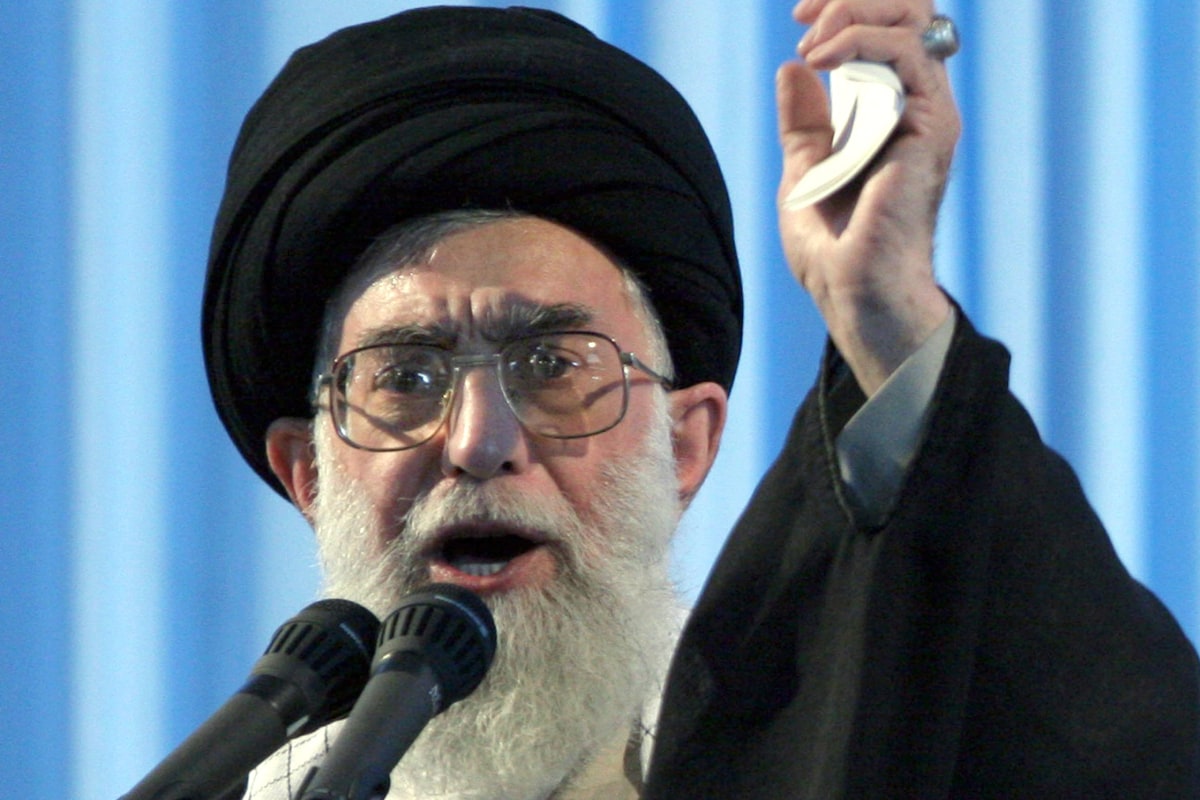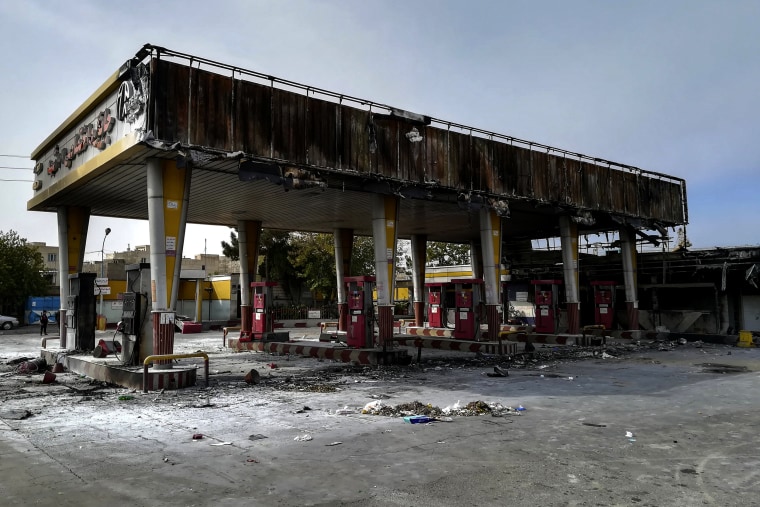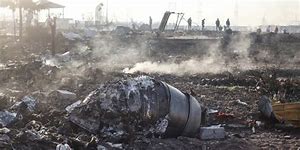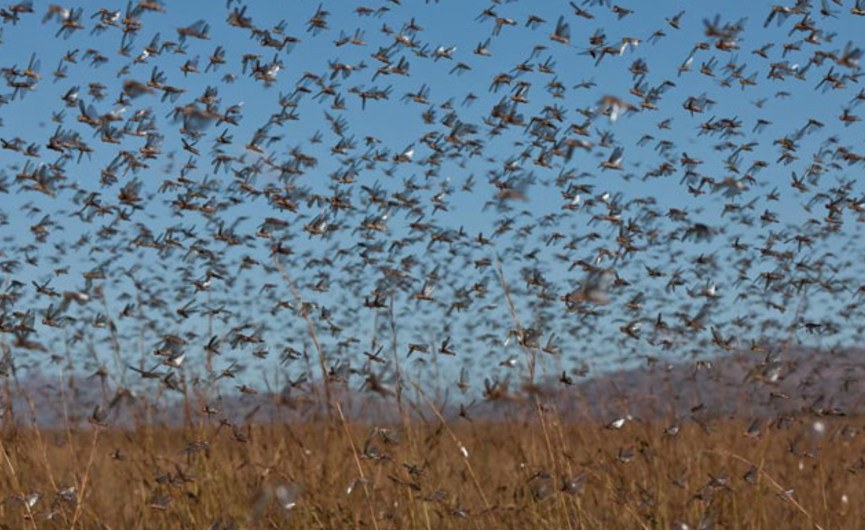by Mateen Elass
Hat tip: Dr. Jean-charles Bensoussan
A visitation of 10 plagues on Iran?
The theocratic regime of Iran is imploding. After forty-one years of iron-fisted arrogance, breath-taking deceit and stupefying incompetence, the rule of the mullahs has so impoverished and infuriated the long-suffering Persian population that the masses are poised to rise up and topple their unwelcome government.
In the last four months, natural, political and economic events have brought Iran to the tipping point. November 15th, 2019 marked the onset of popular protests against the regime, sparked by the announcement of an immediate tripling of the price of gasoline across the country. Under crippling economic sanctions by the USA and its trading partners, the Iranian government was facing shortages of cash and supplies, and skyrocketing inflation.

As protests continued, the regime responded with violence to dissuade further anti-government activity. It didn’t work. For over six weeks people continued to march in the streets, burn gas stations, police buildings, government centers and seminaries, occupy universities to make their demands known.

Shortly after the protests began to dissipate, news broke that on January 8th Ukraine Air flight 752, bound from Tehran to Kiev, had crashed shortly after take-off a few hours after Iran had launched missiles at an Iraqi-American airbase in retaliation for the killing of Qassem Suleimani. The Iranian regime quickly reported that the plane suffered mechanical difficulties. Soon after, they blamed the disaster on pilot error. When supposition arose that the jet might have been shot down accidentally by missiles, senior Iranian leaders decried this notion as “psychological warfare” and “an American lie.”

When this news hit the airwaves, people once again poured into the streets, erupting with anger over their “divinely-guided” government’s duplicity. Popular chants once again pointed to the odium they bore their Shi’ite overlords: “They are lying that our enemy is America; our enemy is right here!” In disgust, many made known their intention to disavow the government however they could.
At the same time, in mid-January, torrential flooding affected four provinces in the south of Iran: Sistan and Baluchestan, Hormozgan and Kerman. Due to the economic and political paralysis of the central government, little to no aid was available to help overwhelmed residents. Roughly six weeks later, heavy storms in northern Iran caused massive flooding and destruction to hundreds of villages and roadways over fourteen provinces, stranding thousands of people.

Shortly before the worst of the flooding in the north, two powerful earthquakes struck northwestern Iran on Sunday, Feb. 23rd. The first registered 5.7 on the Richter scale, and hit in the early morning hours. The second, an aftershock, registered 5.9 and occurred later in the day. Lives were lost as many buildings toppled to the ground. Two days later (2/25), a 4.9 temblor struck south-central Iran. While earthquakes are not uncommon in this region of the world, what is stirring the rage of the people is the lack of rapid and effective response by their government. In fact, there is little to no response at all, for the bottom of the government’s barrel has already been scraped clean by self-serving mullahs, their obsequious mandarins, and the armed forces they pay handsomely to keep the riff-raff at bay.
As if all this were not enough, southwestern Iran faced a record-breaking locust invasion beginning in mid-February. A year ago, the area faced a similar invasion. Officials described that plague as “consisting of millions.” This year’s infestation, they say, numbers in the billions.

And then we come to the novel Corona virus and its attendant disease, COvid-19. There are indications that this virus first entered Iran in early February and that the highest echelons of the regime knew of its presence. The religious city of Qom, home to some of Shi’ism’s holiest shrines and beloved by most of Iran’s mullahs, is where the Corona virus broke out. Even though the governmental clerics knew of the outbreak, they cloaked the truth from their people and the world for as long as possible until the first two victims died in Qom.
Why? Because they needed to protect their delusional image of a government favored by Allah and beloved of its people, as the “Islamic Revolution” which continues to prosper and bless its Muslim citizens. Two critical events were to occur in February, and it was necessary for their fantasy that the world see huge public turnouts of support from the population. If news about the contagion broke out too soon, people would likely stay home, and their propaganda would be imperiled. So they quashed unofficial reports and jailed journalists who wouldn’t toe the party line. The first big event was the celebration of the 41st anniversary of the birth of the Islamic Republic of Iran, on Feb. 11th. Festivities were planned across the country, but especially in the capital city of Tehran, where massive crowds were expected. However, when the day came, empty streets and deserted squares were the stark reality. By refusing to show up, people pronounced their loathing of the government. “Our vote is for regime change.” So said the graffiti.
The Supreme Leader, Khamenei, and President Rouhani, tried to put their best spin on this humiliation by the masses, and set their sights on a better outcome at the second critical event – the Parliamentary elections to be held on Feb. 21st. Since candidates for every slot had to be “vetted and approved” by the Supreme Leader and his sycophantic, hardline Guardian Council, any” so-called “moderate” candidate was disqualified, and only those loyal to Khamenei were allowed to run. Many noted that Feb. 21st would not mark a day of election but one of selection – selecting those whom the Supreme Leader had pre-ordained. As the day approached, opposition leaders pled with fellow citizens to boycott the elections in order to send a strong message that the regime had lost its legitimacy. The people responded, in spite of appeals and threats by Khamenei, Rouhani and others, by staying home. The regime reported the next day a highly-inflated figure, saying that over 41% of eligible voters had participated, but even so had to admit that even this artificial number marked the lowest voter turnout since the Revolution of 1979.
Only after this debacle did the mullahs begin to talk more openly of the coronavirus, which now became a convenient excuse for the low turnout at both national events. “People stayed home,” they said, “out of fear. Foreign governments (read: USA and Israel) whipped up fabricated stories of fatalities and epidemics in order to keep people away from our national celebration and elections.” As usual in the Islamic world (whether Shi’ite or Sunni), when bad things happen the blame is not to be found with Muslim beliefs, practices or institutions, but with non-Muslims who are always conspiring to destroy Islam.
When not casting blame, Muslim leaders seem to love the art of subterfuge. So even after acknowledging the presence of the coronavirus in the country, the Iranian leadership intentionally misled its own populace as well as the larger world by grossly underreporting the rapid spread and number of deaths caused by COvid-19. Khamenei and his underlings downplayed its seriousness (“a passing issue;” “nothing exceptional”) and refused to take decisive actions (except to arrest those who exposed the truth). The clerics in Qom refused the recommendation that they should close down the pilgrimage centers, particularly the Masoumeh Shrine.
As news of the rapid spread of the virus in Iran reached the public, once again people expressed fury toward their leaders for their lies, inaction, incompetence and callousness. Officials rejected the use of quarantines, arguing such practices were ineffective and “belong to the Stone Age.” As hospital beds filled up across the country, it became clear that the healthcare infrastructure nationwide was woefully inadequate. Medicines were in short supply, masks and gloves were unavailable even to doctors and nurses, disinfectants were a distant pipedream. As people began probing, it turned out that the Islamic Revolutionary Guard Corps (IRGC) – the military arm of government responsible to protect and advance “the revolution” within the country and to export it to the outside world – had gathered as many of these materials as possible and was hoarding them for two purposes: first, to dispense them as needed to the upper echelons of government and the elite citizenry; and second, to sell them on the local black market or to desperate nations (such as China) at highly inflated prices so as to line their own pockets. To mollify the angry crowds, they took cans of air freshener, relabeled them as disinfectant spray, and sold them to the unsuspecting public.
This callousness of the Shi’ite authorities has been revealed also in how Sunni villages and towns are completely ignored as the coronavirus spreads in their midst. Likewise, those incarcerated within Iran’s prison system receive little to no medical assistance. Overcrowding and lack of basic hygiene make for the perfect breeding ground for the virus. Sensing a disaster in the making, officials are floating the idea of releasing some 70,000 inmates back into society so as to obscure the regime’s incompetence in protecting its prison population. The fact that such a release would further endanger the public makes little difference to regime leaders.
The question of how the coronavirus first entered Iran led to a focus on the holy city of Qom, where the outbreak was first reported. In recent months over seven hundred Chinese Muslims have been welcomed for study at the al-Mustafa International University, a seminary in Qom dedicated to international students.

Only recently have the mullahs suspended Friday mosque prayers and encouraged citizens to stay home if possible. They continue to lie about the extent of the crisis, forbidding any reports of actual numbers of deaths from morgues and city officials under the justification of “national security.” Sadly, the Supreme Leader and his loyal bureaucrats show greater anxiety over the spread of the truth than they do over the spread of the virus. The government continues to release official virus-related death tolls, but nobody takes them seriously. As of today, March 12th, the number stands at 429. But the main opposition party, the Mojahedin-e-Khalq (MEK) or the People’s Mojahedin Organization of Iran (PMOI), cites figures gathered from on-the-ground reporting in each of Iran’s thirty-one provinces. Their assessment is that as of today, virus-related deaths tallied from 160 cities/towns stands at over 3650. Given that the total global death toll (including Iran’s bogus official figures) is estimated at around 4200, this would mean that if the MEK’s figures are accurate, almost as many people have died in Iran to date as in the rest of the world. Even scarier, best estimates are that the epidemic in Iran won’t peak for at least two more weeks. Some medical experts are predicting that the city of Tehran with a population of around ten million will experience an infection rate of 40%. It’s not hard to understand the outrage building in the hearts of the Persian people toward their culpable and appalling political/religious leaders. Graffiti popping up on walls in the capital city sum this up well: “Khamenei, the sinister mullah, you are the coronavirus!”
Finally, Iran’s already-reeling economy has been dealt what may be a death blow. Earlier this week, as Russia and Saudi Arabia failed to reach an agreement on oil production limits, the Saudis vowed to increase production imminently. That led oil market prices to plummet immediately by 30%. Iran’s economy, even under strict international sanctions, relies heavily on oil sales. Such a huge drop in its oil income can only make a dire situation worse.
No one can predict with certainty when the Iranian theocracy will fall, but there is no question that the Persian people are seething like magma under intense pressure, gathering strength for an impending eruption. The mullahs are using everything at their disposal to stifle this unrest, but their resources are trifling in the face of scores of millions of insurgents. The fall of the mullahs is inevitable. The only question is: How soon?
Mateen Elass
Source: https://mateenelass.wordpress.com/2020/03/12/mulling-the-end-of-irans-mullahcracy/
Follow Middle East and Terrorism on Twitter
No comments:
Post a Comment